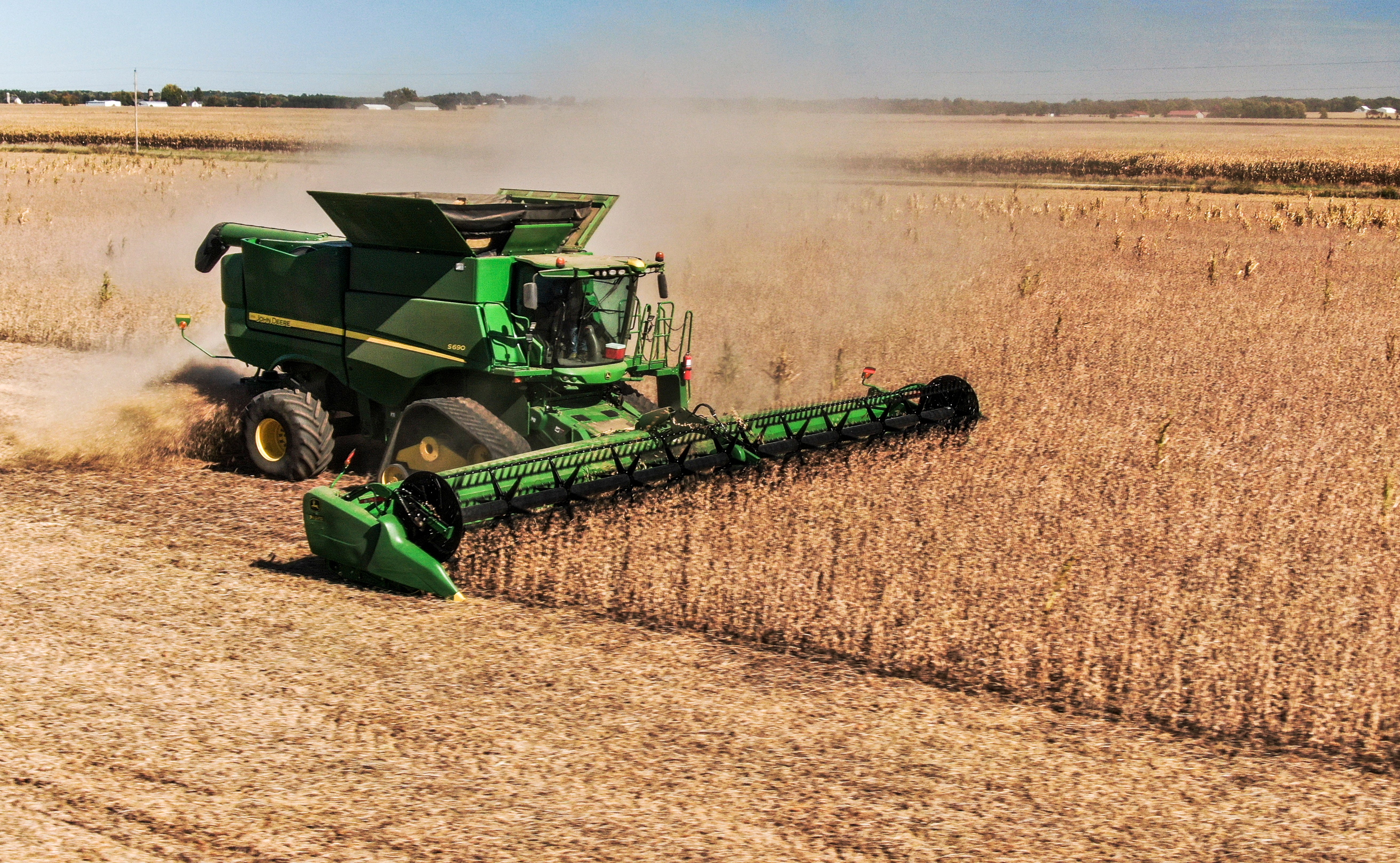China has unleashed a new salvo in the escalating trade war with the United States, imposing sweeping tariffs on American agricultural products worth billions, effective March 4, 2025. Targeting key U.S. exports like chicken, pork, soy, beef, and corn, Beijing’s retaliatory measures—ranging from 10% to 15%—are a direct response to President Donald Trump’s aggressive tariff hikes on Chinese goods, announced in February 2025. This economic brinkmanship, detailed in reports from AP News, Reuters, and Bloomberg, threatens American farmers, inflames global trade tensions, and underscores Trump’s unapologetic America First strategy—but at what cost? At CGN Network, we’re exposing China’s latest attack on U.S. prosperity and demanding action to protect our heartland.
The Tariff Blow: A $21 Billion Hit to U.S. Agriculture
On March 4, China’s Ministry of Commerce announced additional tariffs on $21 billion worth of U.S. farm goods, following Trump’s February 2025 executive order imposing 60% tariffs on Chinese imports, including electric vehicles, steel, and semiconductors, as reported by The Wall Street Journal. The Chinese tariffs, detailed in AP News, include:
15% tariffs on U.S. chicken, wheat, corn, and cotton.
10% tariffs on sorghum, soybeans, pork, beef, seafood, fruits, vegetables, and dairy products.
This move, justified by Beijing as a response to Trump’s “unilateral restrictive measures,” targets America’s agricultural heartland—states like Iowa, Kansas, and Nebraska, where farming drives the economy. Reuters estimates these tariffs could slash U.S. farm exports to China by 30%, hitting a market that imported $26 billion in U.S. agricultural goods in 2024, per U.S. Department of Agriculture (USDA) data. For American farmers already reeling from inflation and supply chain disruptions, this is a devastating blow.
China’s statement, as quoted by Xinhua, accused the U.S. of disrupting “normal trade order” with its tariffs, claiming an “anti-discrimination probe” justified the retaliation. But analysts, including Even Pay of Trivium China, told Reuters that Beijing is signaling restraint by keeping tariffs below 20%, leaving room for negotiations. Still, the move risks escalating tensions, with Trump vowing to counter with “100% tariffs if China doesn’t back down,” per a March 2025 X post that garnered 500,000 likes.

Trump’s Tariff Trigger: America First or Economic Risk?
Trump’s tariff strategy, outlined in his 2025 inauguration speech and detailed on WhiteHouse.gov, aims to protect American jobs and reduce trade deficits with China, which he calls “the greatest economic threat to our nation.” His February order targeted $300 billion in Chinese goods, including EVs and solar panels, citing national security and unfair trade practices, as reported by CNN Business. This follows his first-term tariffs in 2018, which sparked a $50 billion tit-for-tat trade war, per The New York Times.
For Trump supporters, these tariffs are a victory for America First policies, forcing China to play fair and boosting U.S. manufacturing. Fox Business praised the move, noting it could create 200,000 jobs in steel and auto sectors by 2026. But critics, including the U.S.-China Business Council (USCBC), warned in March 2025 that higher tariffs could raise U.S. inflation, already at 3.2%, and hurt consumers with pricier goods, per Bloomberg.
China’s farm tariffs hit back where it hurts: rural America. The USDA’s 2024 report shows U.S. soybean exports to China dropped 15% since 2018 due to prior tariffs, forcing farmers to seek markets in Southeast Asia and Brazil. Now, with pork, beef, and corn under fire, farmers face a $5 billion annual loss, per AgWeb. Iowa Senator Joni Ernst (R-IA) slammed China’s move on X, writing, “Beijing’s tariffs on our farmers are an attack on America’s heartland—Trump must hit back hard!” The post gained 100,000 likes, reflecting GOP outrage.
The Human Cost: American Farmers on the Brink
For U.S. farmers, China’s tariffs are a gut punch. The Des Moines Register reported in 2025 that Iowa soybean farmers, already battling low prices and drought, could see exports to China—a $3 billion market in 2024—halved. In Kansas, wheat farmers face a 15% tariff that could erase $1 billion in annual sales, per Kansas Ag Connection. Chicken producers in Georgia, hit with a 15% tariff, risk losing $500 million, as PoultryUSA warned, threatening 10,000 jobs.
The Trump administration’s response, outlined in a March 2025 White House briefing, includes emergency aid packages for farmers, echoing the $28 billion bailout of 2018–2019, per USDA.gov. But The Washington Post criticized this as a “Band-Aid” for a deeper wound, arguing tariffs hurt rural economies long-term by alienating China, America’s largest agricultural buyer. Farmers, many Trump loyalists, are caught in the crossfire, with AgWeb reporting 20% of Midwest farms at risk of bankruptcy by 2026 without new markets.
Global Fallout: Trade War 2.0?
China’s tariffs add to global trade tensions, with tit-for-tat measures threatening a full-blown economic war. Bloomberg reported in 2025 that the EU and Canada are watching closely, fearing similar retaliatory tariffs on their farm goods after aligning with U.S. policies. Brazil, China’s second-largest ag supplier, stands to gain, with soybean exports to Beijing rising 25% in 2024, per Reuters. This shift could erode U.S. dominance in global agriculture, a cornerstone of Trump’s America First vision.
Analysts warn of broader risks. The Financial Times noted in March 2025 that U.S. inflation could spike 1% if China’s tariffs persist, driving up food prices and hurting consumers. China, meanwhile, is diversifying away from U.S. goods, boosting domestic production and imports from Brazil and India, as South China Morning Post detailed. This long-term strategy could shrink U.S. market share, undermining Trump’s tariff goals.
